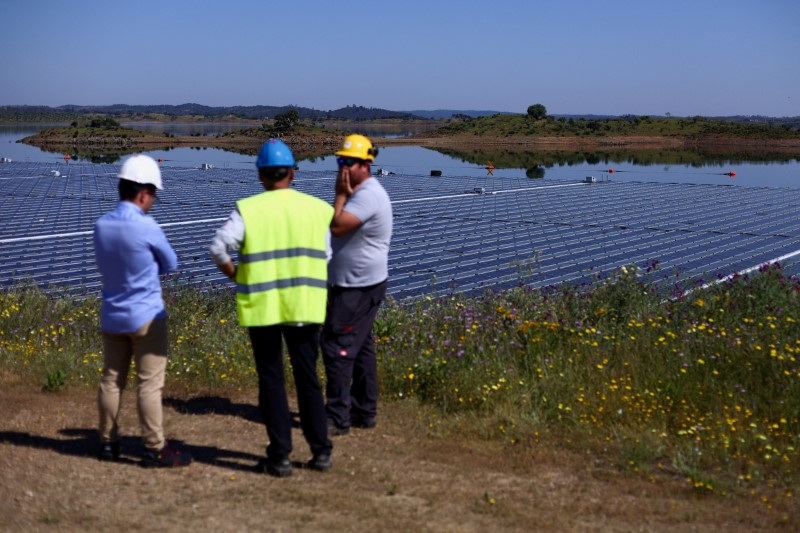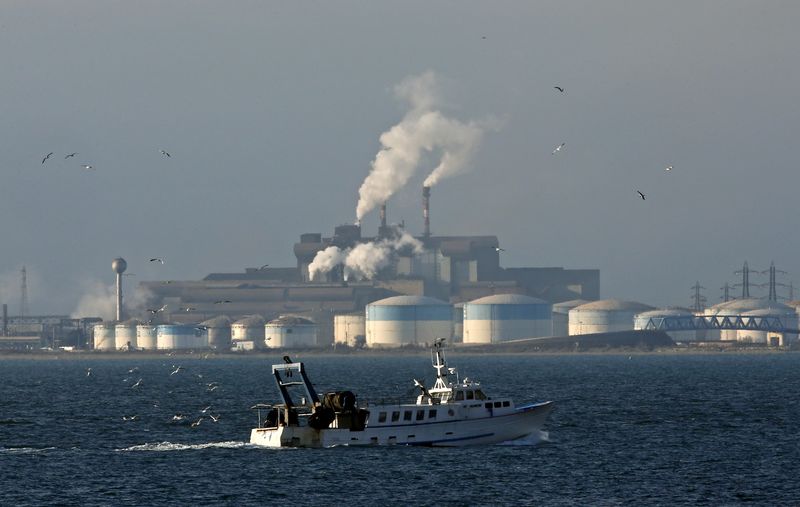By Gavin Maguire
LITTLETON, Colo. (Reuters) – Utilities in Portugal have so far cut the share of electricity produced from fossil fuels to just 10% by 2024, leaving neighboring Spain as Western Europe’s second cleanest major energy sector, after France.
Total clean electricity generation during the first seven months of 2024 rose 32% from the same months in 2023 to a record 21.76 terawatt hours (TWh), data from energy think tank Ember shows.
Record production from solar and wind farms plus the highest total of hydropower production since 2016 have been the main drivers of the clean energy increase, allowing generators to cut their natural gas production by 60% between January and July in 2023.
Portugal’s energy companies also lifted total electricity generation by 7% to the highest level since 2021, demonstrating that a multi-pronged approach to boosting clean generation can drive rapid progress towards energy transition goals.
REVERSAL
The deployment of some of Europe’s largest new hydropower dams and solar farms this year has played a major role in accelerating cuts in fossil fuel use in Portugal’s generation mix.
Both the 1,158 megawatt (MW) Tamega Dam and the 202 MW Cerca solar farm came into operation this year, bringing power companies the total electricity generated by fossil fuels so far this year through July could reduce to just 2.53 TWh.
That number of fossil fuels has fallen by 59% compared to the same period in 2023, and is the lowest on record.
Total emissions from the energy sector fell sharply as a result, to 2.12 million tonnes of carbon dioxide in the first seven months, which is 45% less than the same months in 2023 and a new record.
HYDRO AID
Both the new Tamega installation and higher rainfall levels have helped boost Portuguese hydropower production this year.
Through the first seven months of 2024, pumped storage production was up 67% to 172,758 megawatt hours (MWh), while run-of-river generation was 70% higher at 259,415 MWh, according to LSEG.
Hydropower generation from reservoirs was up 76% to 117,024 MWh.
All told, the cumulative gains in Portugal’s hydropower production meant that the share of hydropower in the electricity generation mix averaged 35.3% so far this year, compared to 20.7% in the same period in 2023, data from Ember.
Solar and wind energy have also seen their share of the energy generation mix increase.
Solar energy generated an average share of 13.3% of electricity in Portugal so far this year, compared to 10.6% in 2023, while wind farms accounted for an average share of 33.1%, compared to 32. 6% in January-July 2023.
And the share of clean energy in the generation mix looks set to continue growing, following new proposals from the Portuguese government to increase the weight of renewables in energy production.
As part of targets to reach carbon neutrality by 2045, renewable energy sources will generate 51% of the country’s final energy needs by 2030, the government said last month.
It appears that innovative use of renewable energy sources in existing energy projects will help achieve these objectives.
The award-winning Alqueva floating solar farm integrates hydropower, floating solar and battery storage capable of generating 7.5 gigawatt hours (GWh) of clean energy annually.
And a planned wind farm with a capacity of 274 MW, included in the Tamega dam project, will generate enough clean energy to meet the annual energy needs of 128,000 homes, according to developer Iberdrola (OTC:).
Further expansions of Portugal’s solar capacity are also expected following a planned project with The Nature Conservancy to identify optimal locations for solar farms. The country is also investigating the suitability of offshore wind farms in addition to upgrades of existing onshore farms.

In combination, this mix of current momentum and planned growth looks set to push Portugal even higher up the list of European clean energy champions, helping the country establish itself as a leader in the global energy transition.


